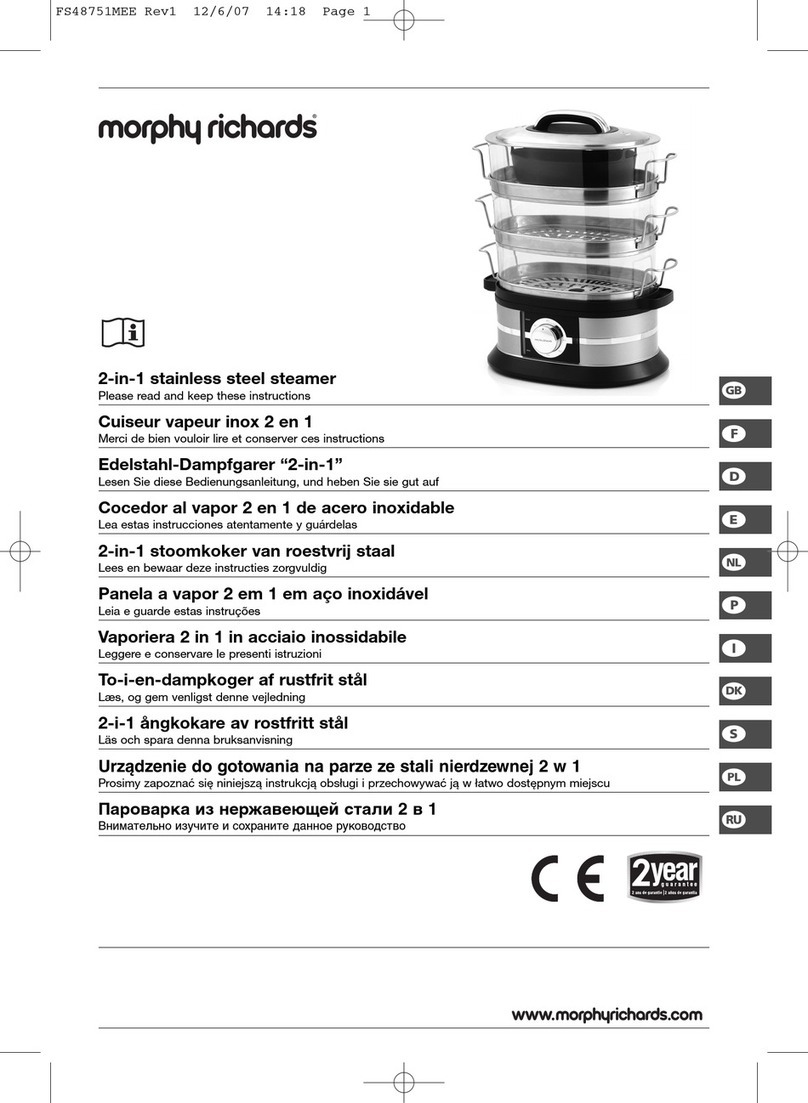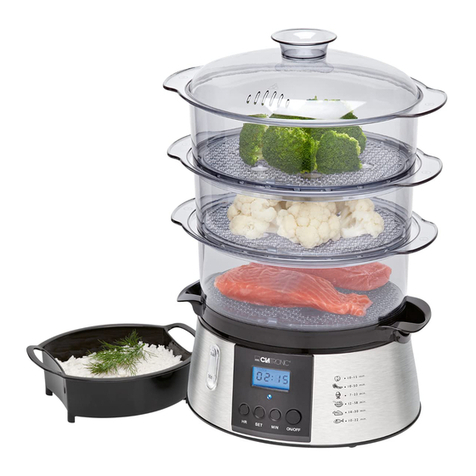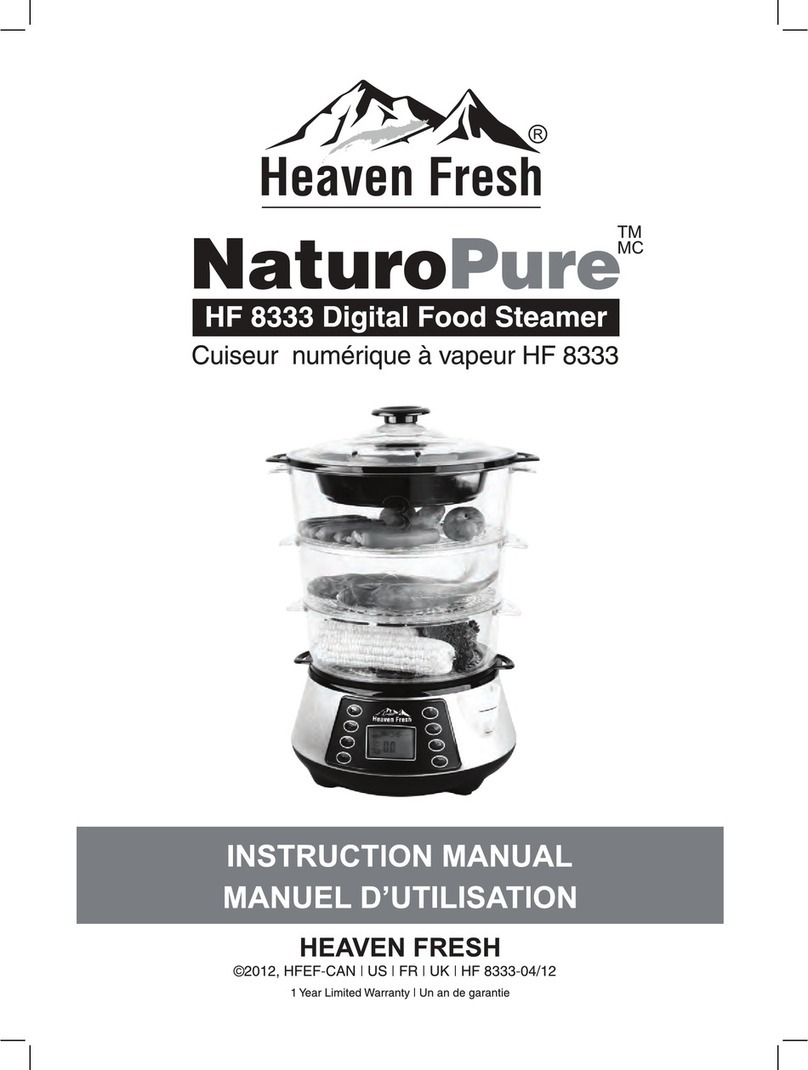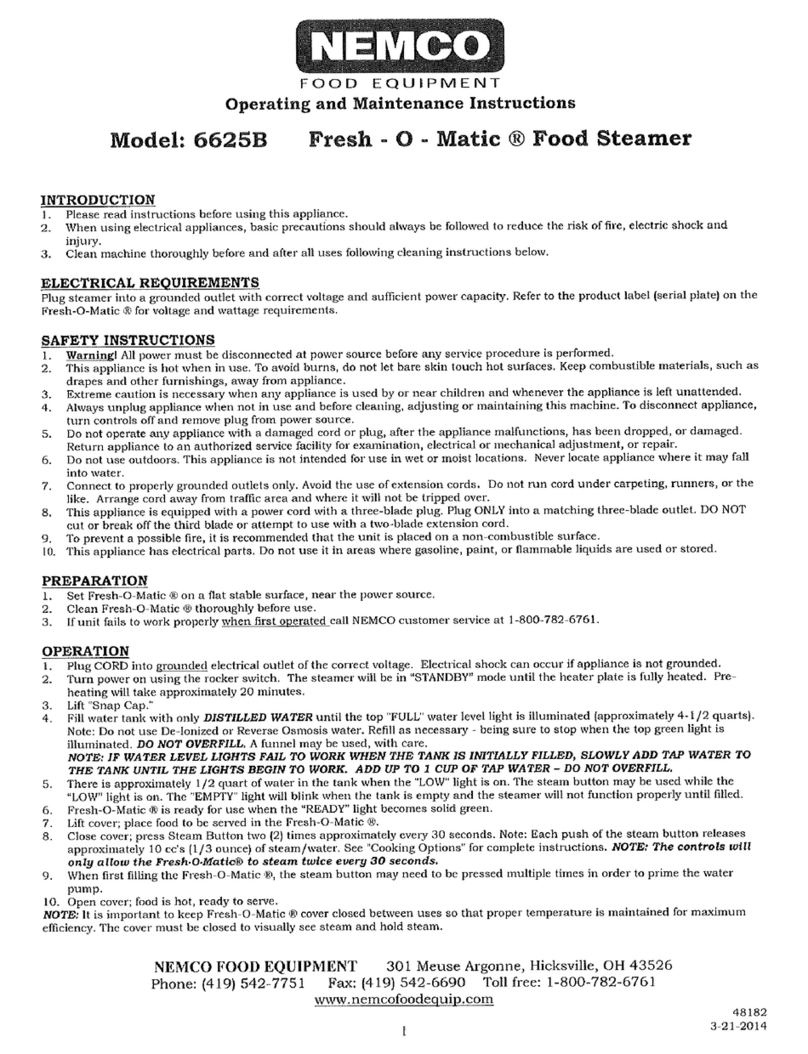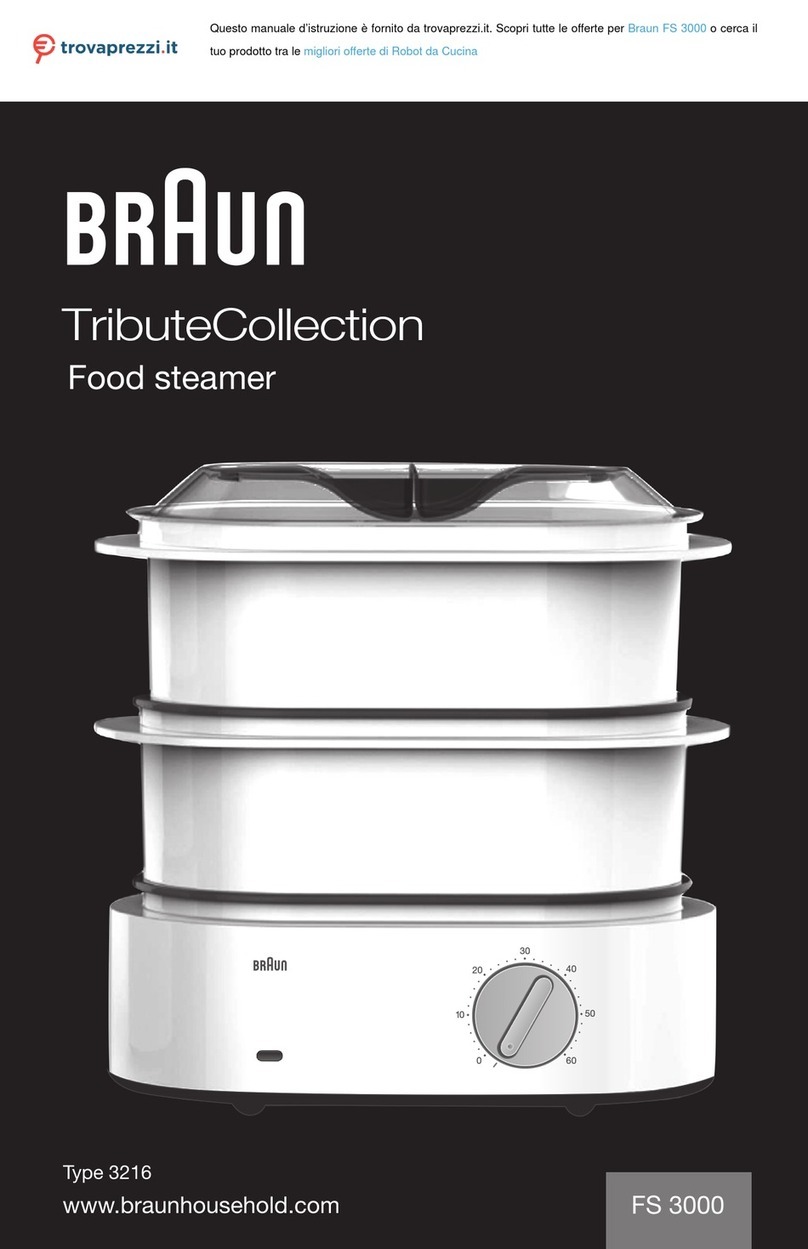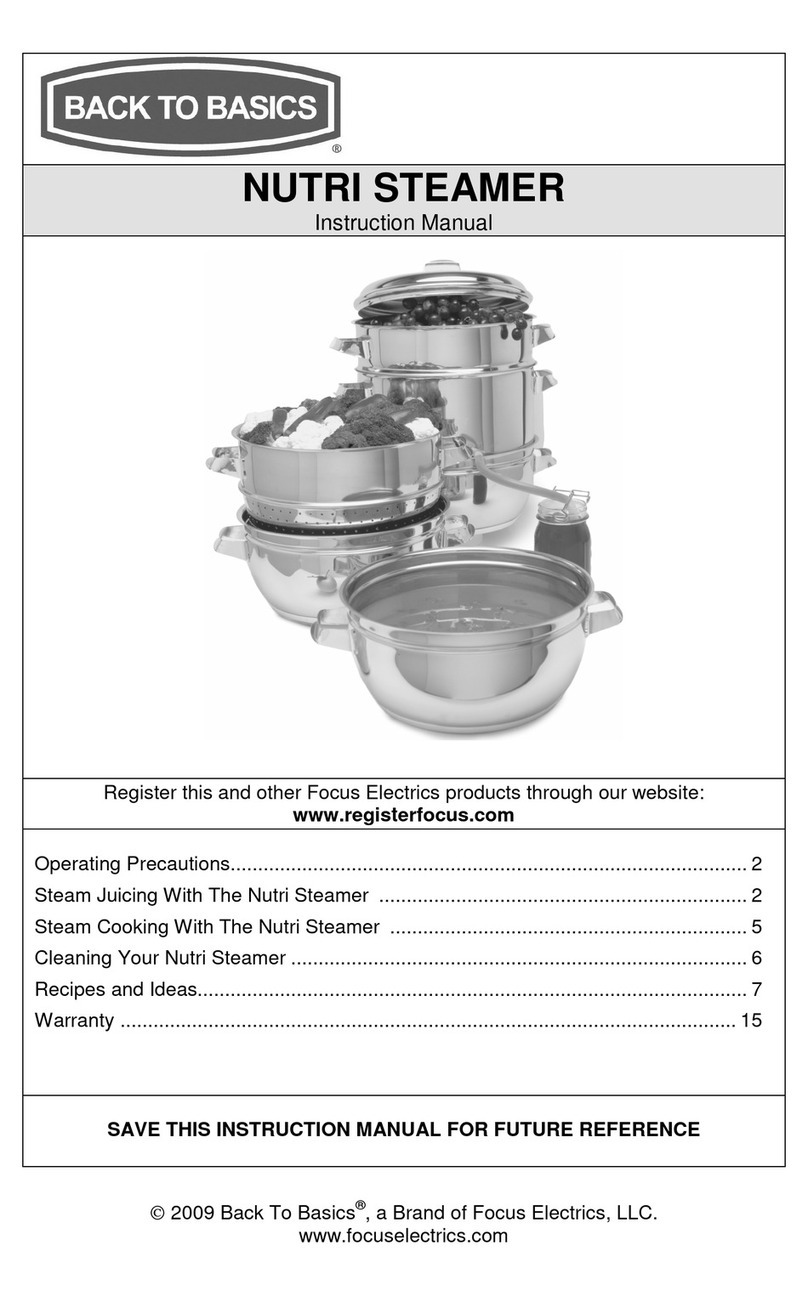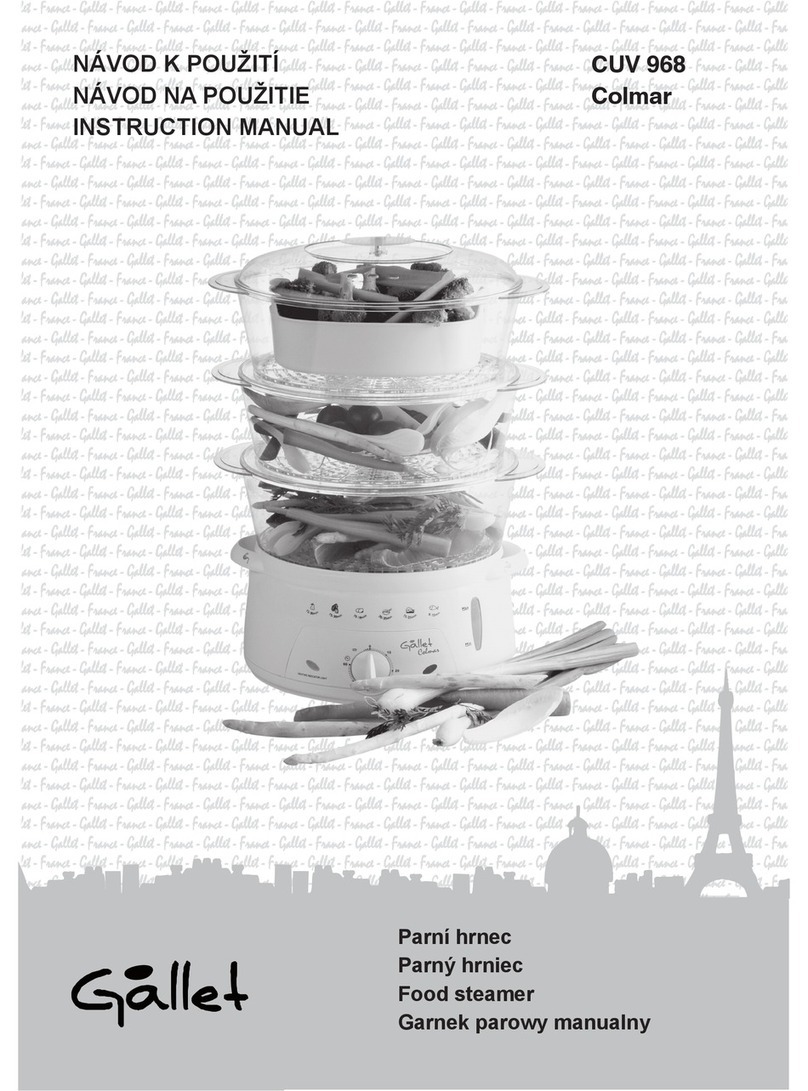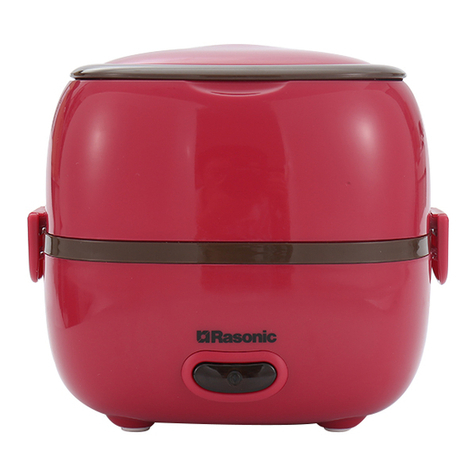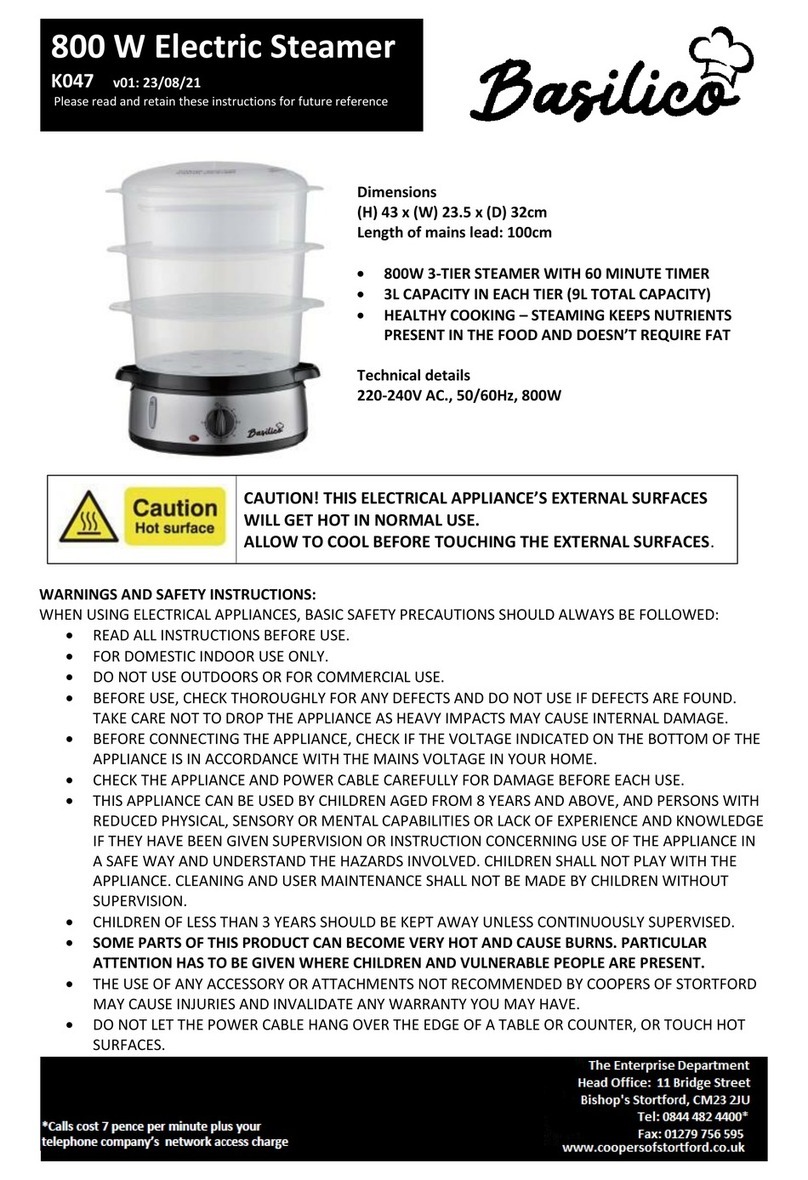
8
THANK YOU FOR YOUR PURCHASE. Congratulations— you now own a baby food maker appliance that
offers you unique performance. Babycook®has been specically designed to prepare healthy meals for
your baby, simply and rapidly. Babycook®cooks, reheats and defrosts food by steaming, which locks in
vitamins and nutrients. It also blends food to the perfect consistency.
INSTRUCTIONS
• When using for the rst time, launch a cooking cycle without any food in the jug and with the water
level at number 3, when done, rinse the jug and the accessories in hot water.
• Only use clean water in the reservoir (tap water or bottled water).
• Wash your hands well with soap and water before handling your baby’s products and food.
CAUTION
• Always use the appliance on a solid and even surface.
• Do not place the appliance near a heat source, hotplates, etc.
• Do not carry the appliance by the jug’s handle.
• Do not launch the cooking cycle if there is no water in the reservoir.
• Do not place Babycook’s jug « j» in a microwave.
COOKING CYCLE
1. Cut the food into 1cm x 1 cm cubes and place them in the basket. To ensure even cooking, it is
advised to not overload the basket. Fig. 1
2. The jug has graduations from 1 to 3. These graduations allow you to measure out the amount of
water to place in the heating reservoir and determine the cooking time. Refer to the cooking guide
(p 11). Measure out the water using the jug according to the chosen recipe and without adding
anything (salt, sugar, herbs and spices etc.) Fig. 2
3. Pour the water into the reservoir. Fig. 3
4. Check that there is a joint
c
4. in the reservoir
5. Lock the reservoir’s lid Fig. 4
6. Check that the blade is correctly installed in the bottom of the jug with the joint and the nut Fig. 5
CAUTION, CUTTING RISK
when handling the sharp blades
7. Place the basket in the jug, taking care to position the tongue of the basket in the lip of the jug. Fig. 6
8. Check that the steam outlet joint
k
is not blocked
9. Lock the jug’s lid rmly on to the jug Fig. 7
10. Lock the jug onto the appliance Fig. 8
11. Plug the appliance into a suitable socket
12. Turn the button left to the steam symbol to start the cycle ( ). Fig. 9
13. When the cooking light switches off, the heating cycle stops and a sound signal is heard (5 beeps)
Return the control button to position 0 Fig. 10
Unlock the jug’s lid,
CAUTION. BURN RISK
and use the spatula to check if cooked.
14. If you want to start the cooking cycle again, return the control button to position 0, add cold water
to the reservoir (level 1 to 3 according to needs), wait for 30 seconds and turn the button to the
steam symbol.
15. Remove the basket with the spatula. Fig. 11
16. If you wish, set aside the cooking juices collected in the bottom of the jug to add to the preparation
or facilitate mixing.
RECOMMENDATIONS
• Do not stop cooking during the cycle in order to avoid leaving water in the heating reservoir.
• Only use clean drinking water in the reservoir, which is free of any food or any other type of residue.
• Always check the temperature of food before serving.
• It is advised to not heat food over a long period.
MIXING CYCLE
1. Check that the blade is correctly installed in the bottom of the jug with the joint and the nut Fig. 5
2. After checking the cooking time, empty the food into the basket in the jug Fig. 12.
3. According to the desired consistency, add some of the cooking juices before starting the cycle.
4. Place the mixing cover on the jug Fig. 13
5. Lock the lid onto the jug, making sure that it is correctly positioned Fig. 14, then lock the jug onto
the appliance Fig. 15
6. Plug in the appliance and turn the button ( ) 6. to the right using pulses lasting a maximum of 10
seconds. Fig. 16. Between each pulse, open the jug’s cover and, if necessary, mix with the spatula,
taking care to avoid touching the blade, and add some cooking juices until you obtain the desired
consistency.
7. Unlock the lid.
RECOMMENDATIONS
• Do not empty out the preparation with a utensil which may damage the blade.
• Wipe the reservoir with a clean cloth after using your Babycook.
HEATING FEEDING BOTTLES - Babycook Original Plus only
1.
Fill the bottle with water or milk according to the desired quantity.
2.
The cloche has graduations (1 to 30 ml) which allow you to measure out the amount of water to
place in the heating reservoir and determine the bottle’s heating time. Refer to the heating guide
(p 9) bearing in mind that this information is provided for information purposes only. Measure out the
water according to the type of bottle and the liquid’s initial temperature. Fig. 17
3.
Place the bottle stand
r
in the bottom of the reservoir Fig. 18
ATTENTION
: Never insert a bottle without this stand at the risk of damaging the reservoir and the
bottle.
4.
Pour the water into the reservoir using the cloche. Fig. 19
5.
Place the full bottle without the teat and without the lid on the bottle stand in the reservoir Fig. 20 (a)
6.
Check that the cloche’s steam outlet
o
6. is not blocked
7.
Check that there is a joint
c
in the cloche
8.
Lock the cloche onto the reservoir Fig. 21
9.
Plug the appliance into a socket.
10.
Turn the button left to the steam symbol ( ) 10. to start the cycle. Fig. 22
11.
When the cooking light switches off, the heating cycle stops and a sound signal is heard (5 beeps).
Return the button to position 0
12.
CAUTION. BURN RISK
. Unlock the cloche holding it by the insulating ring
p
and retrieve your
bottle.
13.
If you want to start the heating cycle again, return the control button to position 0, add cold water to
the reservoir (level 3), wait for 30 seconds, empty the water and start a normal cycle again.
NB
: Cloche compatible with all feeding bottles less than 73 mm in diameter, except bottles with a
removable valve at the bottom of the bottle.
Recommendations for controlling the nal temperature:
• Open the cloche at the end of the cycle to prevent the contents from continuing to heat.
ATTENTION
: glass receptacles may be hotter than their actual contents.
• Check that the size of the bottle is adapted to the volume of water to heat.
Choose a bottle that will be lled at least to half of its height
Example, to heat 120 ml of water, choose a 240 ml bottle maximum
• Always stir the bottle jar to even the temperature of the contents
• Always check the temperature of the food by pouring a few drops on to a delicate piece of skin (inside
the wrist, back of the hand, etc.) or by tasting the food.
